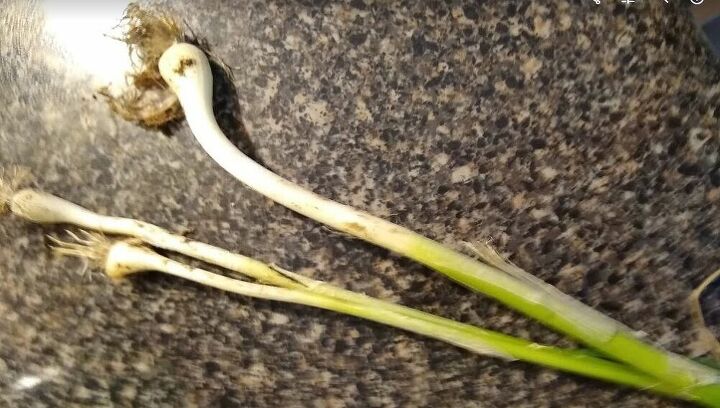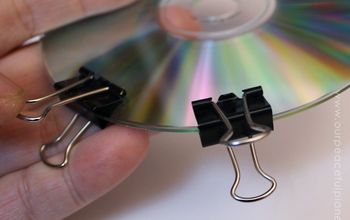How to fill planter for veggies and herbs?
I purchased 2 elevated planters (4' L x 14" W x 12" D). I want to grow some veggies and herbs. How should I fill my planters. I want to consider weight, drainage, and suitability for e.g. tomatoes, beans and peppers and squash . So much info, on the Web. I am overwhelmed and have never gardened before. How do I start?
Related Discussions
GNATS - How to get rid of them?
Somehow my house and garden got tiny gnats that killed my fuchsia plant and fly everywhere. I have tried ALL the Web recommendations - soap and oil dishes, sand in th... See more
Marigolds growing! Should I pinch the buds?
My marigold plants are growing. I heard that pinching the buds until Autumn will allow them to grow without killing the plant. Is this true?
Growing garlic
Growing our first garlic, should we wait until the leaves are drying out before we pick it? Husband picked first one today along with our first potatoes.
How to keep mice out of your garden?
Hi everyone, I have mice in my garden destroying my vegetables and I have also noticed them in the barn and shed. Please can someone tell me how to prevent them from ... See more
What's the best flower/plant to grow in Texas?
I know that opinions vary, but what's your opinion?!I have great luck w Rosemary plants. Green all year long.
How can I grow vegetables in a plastic wheelbarrow?
I have a plastic beat up wheelbarrow, it leaks from the container where it is screwed to the frame and the wheel is beyond repair. Any suggestions for growing vegetab... See more
Is it OK to eat wild onions that grow in our yards?
I read online that it is, as long as it IS onion growing and not garlic. The article said they'll smell like onions if that's what they are. It didn't mention any dif... See more




It would take an awful lot of bean plants to get enough produce at once to eat, I would reconsider planting those. Tomatoes are a plant that needs lots of room to grow, I would consider using a huge pot, like twenty four inches across for them instead of in the planters. I would put an inch or two of gravel in the bottom of the planters to help with drainage, then fill with a good potting soil, and perhaps some compost mixed in. Make sure that there are plenty of drain holes for water drainage along the entire length so that no water can pool. You should have no problem with herbs, peppers, leaf lettuce, those kinds of veggies that don't take as much room to grow. I would avoid mint as it can easily take over a large area. If you use a zig-sag pattern back to front, you will be able to fit in a few more plants.
My grandmother started me gardening. I also use the Farmers Almanac just like she did. Get a copy at the store and read it. It will give you charts to go by. Relax and experiment. I use table scraps and worms to fertilize. It takes practice to get exactly what you want. Relax and read and water with epsom salts in your watering can! Above all thank sunshine for the warmth!
https://www.youtube.com/watch?v=1FYJMbX1--o
Get 2 of the big tubs with rope handles for 2 tomato plants and use the large container for other beans,peppers,squash just add trellis(chicken wire https://www.youtube.com/results?search_query=diy+trellis+for+beans )for the beans so they grow upright taking less space and the squash on one edge so they can grow outside of containers along ground;Make sure there is good drainage just make numerous holes in tubs around bottom about 2"s above bottom edge use a hot 16 penny nail nothing too big or you'll loose soil when exccess water drains; if you have numerous holes you won't need rocks in bottom & it will be esasier to move them if needed. or you can put them on dollies with casters(diy board with casters https://www.youtube.com/watch?v=3xEm58JP5E0 ) tomatoes need full sun don't water your plants by spraying them only water soil this cuts down on many problems like mildew/blight. don't need a bunch of crazy stuff in soil just buy good potting soil maybe for every 4 bags add 1 bag manure you can also add ground unwashed egg shell,used coffee grounds mix it all up really well and fill tubs/container ; 2tablespoons baking soda into soil in the big rope handle tubs mixed well will help tomatoes be less acidic sweeter; here are DIY remedies for fungal diseases if you get them REPEATING this don't water your plants by spraying them only water soil this cuts down on many problems like mildew/blight. Most conventional products are made for prevention and control, not elimination of an existing infection. That’s why it’s important to start a control program before powdery mildew occurs or at least at the earliest sign of detection.There are many retail, off-the-shelf fungicide products that are effective at treating mildew. One of the most common active ingredients used for control is “chlorothalonil”. Although effective, it coats the leaf surface with a white milky film that is quite noticeable.Lesser know options include:Baking Soda (sodium bicarbonate) -This is possibly the best known of the home-made, organic solutions for powdery mildew. Although studies indicate that baking soda alone is not all that effective, when combined with horticultural grade or dormant oil and liquid soap, efficacy is very good if applied in the early stages or before an outbreak occurs.Use this recipe to make your own solution—mix one tablespoon of baking soda with a teaspoon of dormant oil and one teaspoon of insecticidal or liquid soap (not detergent) to a gallon of water. Spray on plants every one to two weeks.Potassium bicarbonate– Similar to baking soda, this has the unique advantage of actually eliminating powdery mildew once it’s there. Potassium bicarbonate is a contact fungicide which kills the powdery mildew spores quickly. In addition, it’s approved for use in organic growing.Mouthwash – If it can kill the germs in your mouth, certainly the fungal spores of powdery mildew are no match. And that’s the premise. Generic, ethanol based mouthwash can be very effective at control. Tests using one part mouthwash to three parts water worked for well for Jeff Gillman, Ph.D and Associate Professor at the University of Minnesota, Department of Horticulture. Just be careful when mixing and applying mouthwash as new foliage can be damaged.Vinegar – Similar to mouthwash, the acetic acid of vinegar can control powdery mildew. A mixture of 2-3 tablespoons of common apple cider vinegar, containing 5% acetic acid mixed with a gallon of water does job. However, too much vinegar can burn plants but at the same time, higher concentrations (above 5%) are more effective.Sulfur and Lime/Sulfur – Direct contact by sulfur prevents disease spores from developing. When mixed with hydrated lime, the solution will penetrate leaves for even greater effectiveness. A widely available version of this combination includes copper sulphate and hydrated lime, known as Bordeaux mix. However, all of these solutions can burn plant tissue and is damaging to microorganisms in the soil and harmful to beneficial insects. It is also considered moderately toxic to mammals and humans. Use sparingly and with caution if at all.Milk – The latest player in the fight against powdery mildew is milk. It’s not clear yet why it works so well, but it is believed that naturally occurring compounds in the milk are at work to combat the disease while also boosting the plant’s immune system. One experiment showed good results by applying a weekly dose of one part milk to two parts water.Water – Ironically, dry conditions and high humidity are the most favorable conditions for powdery mildew to form. But straight water is its enemy because it washes off the spores before they have time to embed. However, water isn’t something that I promote for control because wet foliage is friend to many other plant diseases. If you’re going to try this option, do so early in the day so foliage has time to dry out quickly.Neem oil – This is a readily available organic option to disease and pest control. Neem oil is extracted from the neem tree, native to India. This is an effective disease control and a broad spectrum, natural insecticide that is kinder to beneficial insects and mammals. As for controlling powdery mildew, results vary but it is not the best option. Results are usually moderate at best.Even with many choices for control, prevention is still the best medicine, not only with powdery mildew, but with other diseases as well. Most important, Have Fun, it should not be stressful, digging in the dirt, growing plants is great for your soul. Adding flowers/herbs into your garden helps draw pollinators Bees,Ants,Butterflies,Hummingbirds. getting beneficial bugs--Buying Live Lady Bugs,Green Lacewing,Praying Mantis egg cases,Nematodes(in soil) really helps your garden they eat pests that will eat your new prizes your veggies! Whew.......... I think I'm finally done.